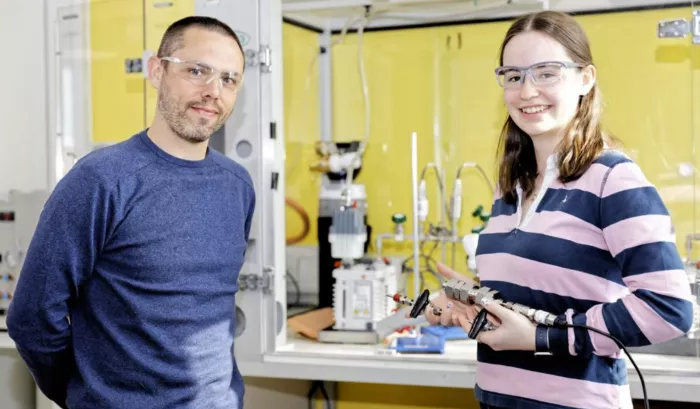Researchers have developed a low-cost device that can selectively capture carbon dioxide gas when charging Then, when it is discharged, carbon dioxide can be released in a controlled way and collected for reuse or responsible disposal.
The supercapacitor device is similar to a rechargeable battery, about one quarter the size, and is partially made of sustainable materials, including coconut shells and seawater. The researchers found that by slowly alternating currents between plates, they could capture twice as much carbon dioxide as before.

Designed by scientists at Cambridge University, the supercapacitor can capture and store carbon at a lower cost. About 35 billion tons of carbon dioxide are released into the atmosphere every year, and solutions are urgently needed to eliminate these emissions and solve the climate crisis. At present, the most advanced carbon capture technology is quite expensive and requires a lot of energy.
A supercapacitor consists of two electrodes with positive and negative charges. The team tried to alternate from negative voltage to positive voltage to prolong the charging time of previous experiments. This improves the ability of supercapacitors to capture carbon. Supercapacitors are similar to rechargeable batteries, but the main difference is how the two devices store charge. Batteries use chemical reactions to store and release charges, while supercapacitors do not rely on chemical reactions. On the contrary, it depends on the movement of electrons between electrodes, so it takes longer time to degrade and has a longer life.
The charge discharge process of this supercapacitor may use less energy than the amine heating process currently used in industry. The next question for researchers will involve investigating the precise mechanism of carbon dioxide capture and improving it. The materials used to make supercapacitors are cheap and abundant. The electrode is made of carbon, which comes from discarded coconut shells.
However, the supercapacitor does not spontaneously absorb carbon dioxide: it must be charged to absorb carbon dioxide. When the electrode is charged, the negative plate will absorb carbon dioxide gas while ignoring other emissions, such as oxygen, nitrogen and water, which will not have an impact on climate change. Using this method, supercapacitors can both capture carbon and store energy.
The results were published in nanoscale on May 19, 2022.